 EN
EN
 PT
PT

Create your monster’s portrait by reproducing the original portrait as quickly as possible!
Someone in the art gallery had fun modifying all the monster portraits on display. What a mess!
Will you be able to quickly and carefully change your painting back to its original version?
Instead of paint and a paintbrush, you have manycoloured balls which need to be positioned in the right place and in the correct order.
Monsters on show is a game from the “Playing to Grow” series, created by Gianluca Daffi, expert in childhood psychology and university professor.
Each game focuses on a specific executive function or a cognitive process with the objective of developing it through play and having fun.
Monsters on show, in particular, develops attention span, working memory, and emotional self-control.
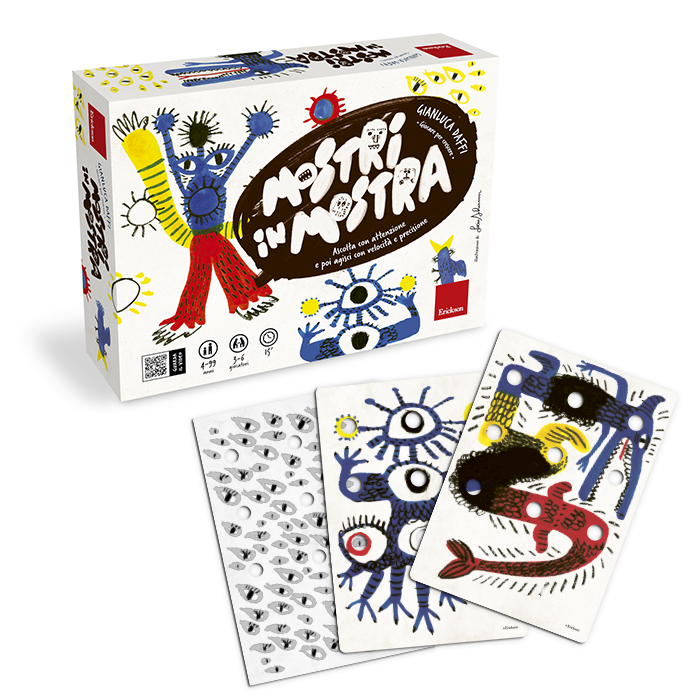
HOW TO PLAY
Game contents
The game is composed of 4 game board frames with holes, 36 coloured balls: 9 balls (2 yellow, 2 white, 2 red, 2 blue, 1 black) for each of the 4 players, 20 cards with 10 monster portraits.
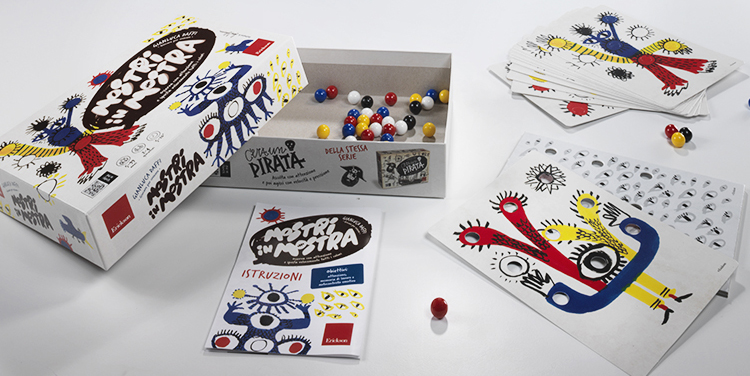
Objective
To become an expert painter and place the coloured balls in the right position and in the correct order, following the example of the player who is leading the round.
Game set-up
Monsters on show can be played by 2 to 4 players. The recommended age is: 5 years old and up.
For each round of the game, one player acts as the leader. To start, each player is given a game board frame. All the coloured balls are placed in the lid of the game box, in random order.
The first game leader is the youngest player.
How to play a round
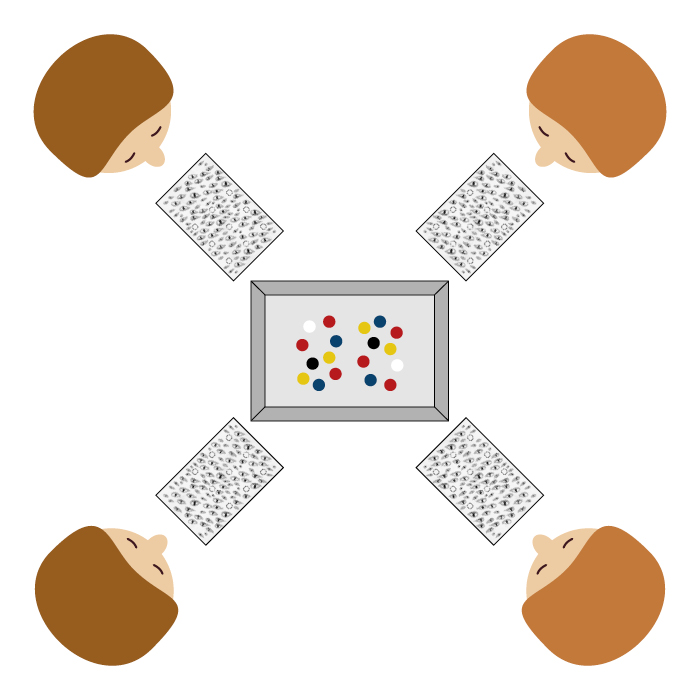
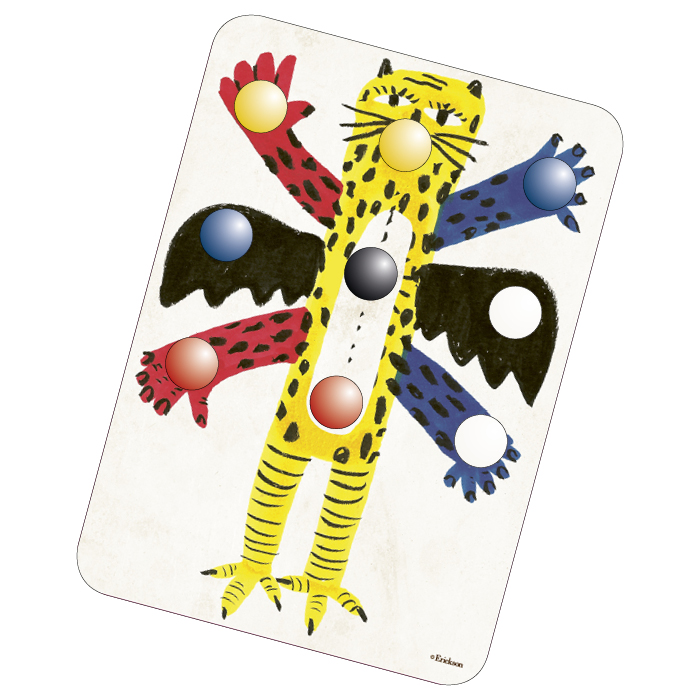
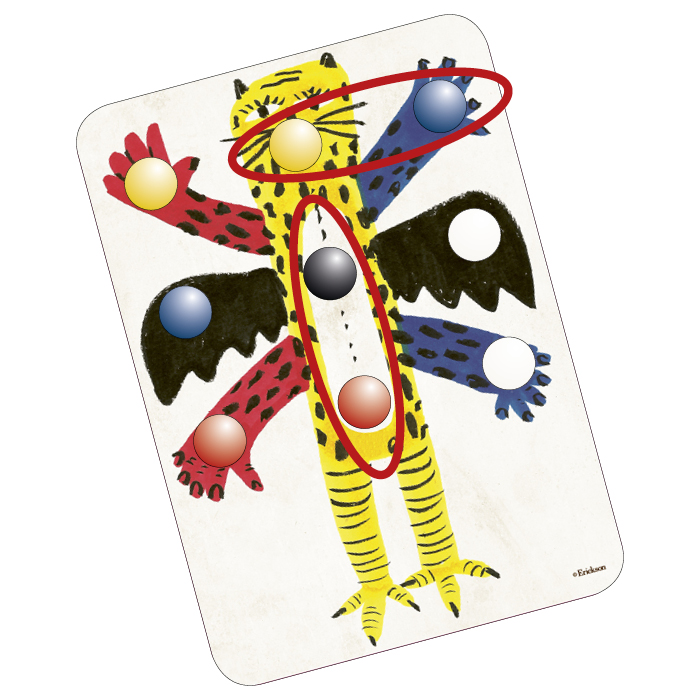
A GAME WHICH STIMULATES EXECUTIVE FUNCTIONS
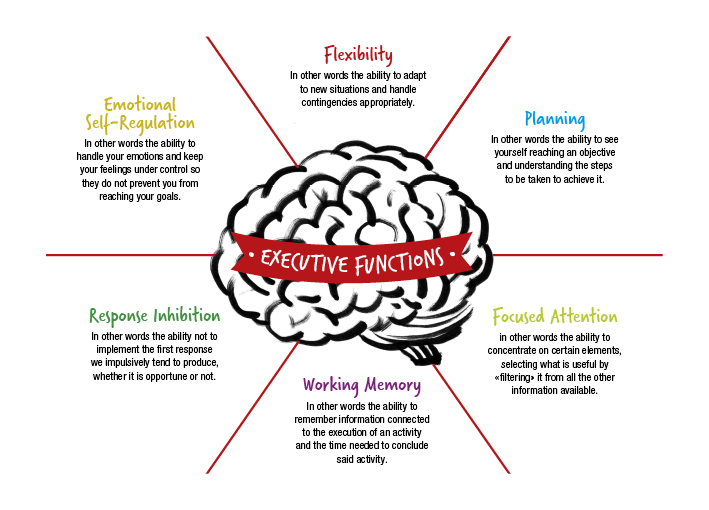
What are executive functions?
Executive functions are the set of mental processes which monitor our thoughts and behaviours. They incorporate various neurological operations which are needed to control and coordinate our actions.
Put more plainly they are like a series of little gnomes who all work together in our brain, helping us execute any kind of task we might face in our daily lives.
FLEXIBILITY – In other words the ability to adapt to new situations and handle contingencies appropriately
PLANNING – In other words the ability to see yourself reaching an objective and understanding the steps to be taken to achieve it
FOCUSED ATTENTION – in other words the ability to concentrate on certain elements, selecting what is useful by “filtering” it from all the other information available
WORKING MEMORY – In other words the ability to remember information connected to the execution of an activity and the time needed to conclude said activity
RESPONSE INHIBITION – In other words the ability not to implement the first response we impulsively tend to produce, whether it is opportune or not
EMOTIONAL SELF-REGULATION – In other words the ability to handle your emotions and keep your feelings under control so they do not prevent you from reaching your goals